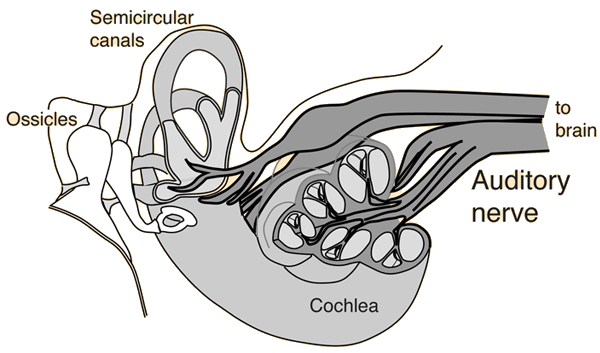

Some publications suggest that a history of loud noise or cell-phone use may cause acoustic neuromas to develop however, this is very controversial, and based on current information, these factors likely do not cause acoustic neuromas. There is no convincing evidence that certain foods, smoking, or other environmental factors increase the risk of developing an acoustic neuroma. However, when this gene is mutated, a tumor may form. Unfortunately, in most cases, we do not know why this mutation develops in the first place. Approximately 95% of all acoustic neuromas occur sporadically because of random mutations in the affected gene, meaning they are not part of an inherited genetic syndrome. When this gene is healthy (not mutated), it prevents the Schwann cells from growing into a tumor. Virtually all acoustic neuromas have at least one mutation involving an important gene located on chromosome 22. Recent research has suggested that approximately one in 2000 adults, and up to one in 500 adults over the age of 70, will be diagnosed with an acoustic neuroma during their lifetime. Therefore, these tumors are more common than previously thought. While historically thought to be quite rare, today an increasing number of people are diagnosed with acoustic neuroma. Overall, they represent 8% of all brain tumors and are the most common tumor to develop between the ear and the brainstem. Instead, virtually all the problems that can develop from an acoustic neuroma result from the tumor applying pressure on adjacent important structures, such as the brainstem, cerebellum, and other neighboring nerves. Acoustic neuromas occur equally in men and women and most commonly develop between the ages of 45 and 70 but may occur at any age. Therefore, the term “vestibular schwannoma” is technically more accurate than the term “acoustic neuroma,” despite both being used interchangeably. As acoustic neuromas are non-cancerous, they do not spread to the lungs, bones, or other parts of the body and do not invade the brain. Acoustic neuromas are tumors that develop from the insulating Schwann cells on one of the two vestibular nerves. Much like a typical electrical wire, the eighth cranial nerve conducts electricity and has an outer layer of insulation. A special layer of cells, called Schwann cells, create the insulation around the nerve. The eighth cranial nerve, often referred to as the “hearing and balance nerve,” contains three smaller nerves – two balance (or vestibular) nerves and one hearing (or auditory) nerve – and is collectively responsible for sending balance and sound signals from the ear to the brain. What is an acoustic neuroma?Īcoustic neuromas, also referred to as vestibular schwannomas, are non-cancerous (benign) tumors that develop from the eighth cranial nerve, between the ear and the brainstem. This information appears in the organization’s “Newly Diagnosed Handbook”. Additional information can be found at. The following information is provided by the Acoustic Neuroma Association.


 0 kommentar(er)
0 kommentar(er)
